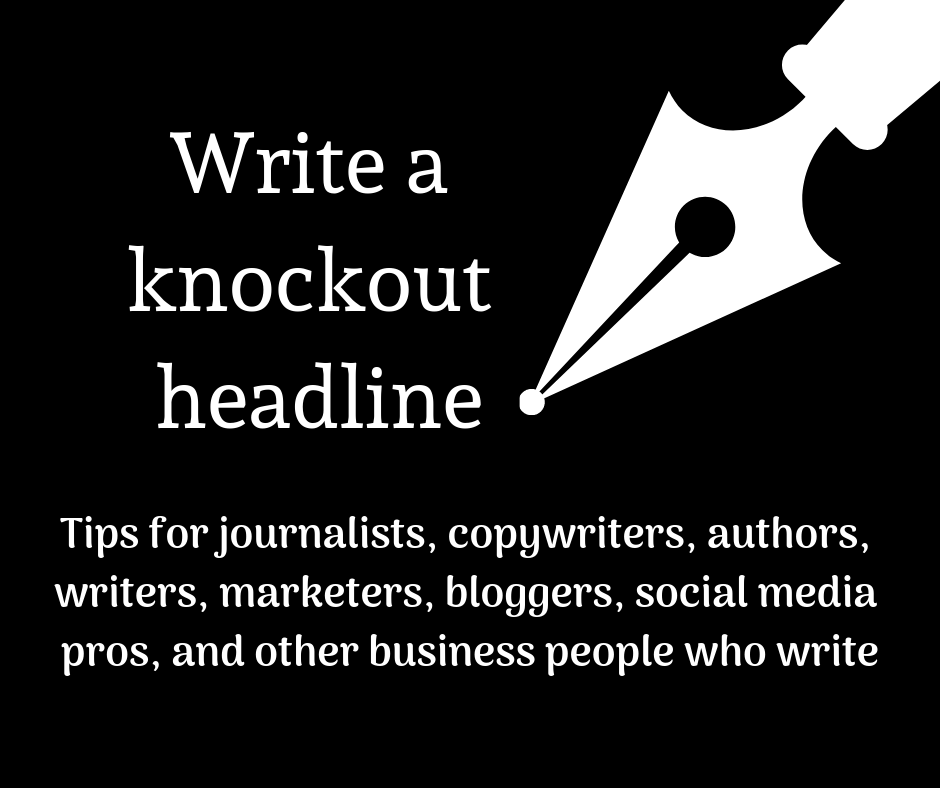Journalists used to be the only ones who had to write headlines. Now business owners are their own bloggers, reporters, and social media managers. Copywriters are crafting webpage headlines, subheadlines and even email subject lines. It seems like everyone who is either a writer or in the business marketing field needs to know how to write a good headline of some sort…even if it’s not a traditional news headline.
I cultivated some experience in headline writing when I was a copy editor for Gannett. I thought I would only be editing stories, but it turns out half my job was creating headlines–and doing it so they’d fit in tight spaces. You learn a lot of really short words when you’re short on space. (Who knew back then that I’d be doing the same thing on Twitter 10 years later, strategizing on which words to cram in a headline advertising articles I’d written for other news publications?)
Looking to pen an attention-getting headline that lures readers in and sums up what an article has to say? Here are a few tips.
Determine what word must go in. In news, it’s imperative to have certain words from your story in the headline. If I am writing an article for a health publication about a new cancer drug, I definitely want to get “cancer” in there, if not “new” and “drug” too. In more evergreen content, I may be able to add more phrases, but I still want to know which words must go in. What individual words do you think have to go in the headline so your reader gets the gist of the article? Do you need action words to make the reader take action, too? Keep this in mind as you identify those “must-add” words.
Know your audience and the medium. Space doesn’t matter as much if you’re on LinkedIn, but it can if you’re working in a print publication or say, for an email newsletter article. Again, if you’re writing for a newspaper, you want to get a few certain key words (not just keywords) in the headline so the reader has an idea of what the story is about. Also, you may want a more lax, attention-grabbing headline if the headline is not for a news outlet and is instead a social media post promoting a headline. In news, it’s more of sticking to a few words that sum up the article instead of getting a reader to click on it, though you likely want them to read on for more information. News readers want to be able to skim a headline and get the gist of the development–they may not read on. On the flip side, in copywriting, a headline can give a summary but also be used to engage the reader to take action or read the entire article. Look at past articles or content to get a feel for the tone.
When I’m writing about that cancer drug in news, my headline may be “New Cancer Drug Extends Life,” while an email or social media headline may be “The Cancer Drug That Could Help You Live Longer.” Big difference!
Add action. Depending on where your headline will appear, it’s important to add action. News readers want to know what the news is, while an email subject line (it kind of counts as a headline) will want to drive the user to open the message and convey what they’ll get if they do.
Think phrasing. I love what this article has to say about the phrases we can choose, as certain ones can be more effective for different mediums. Keep in mind that “will make you” and “this is why” may work awesome in an email subject line–but not so great for a news headline. If you’ve got more room, flexibility or the ability to add in a subhead, that’s where a good phrase can come in handy. Otherwise, I stick to identifying the must-feature words and building a headline around those.
Send me your questions about journalism or writing in general. Visit my website or read up on the latest NAIWE news!

